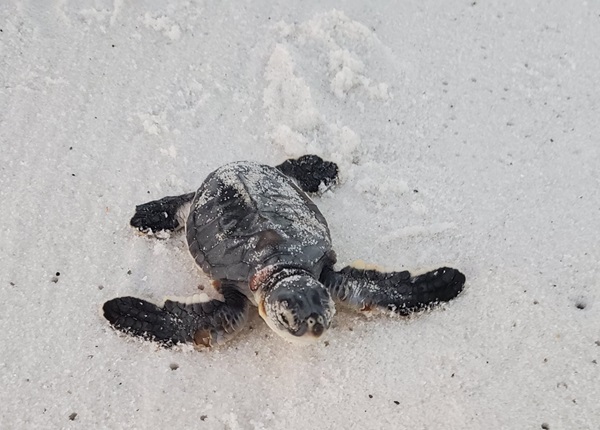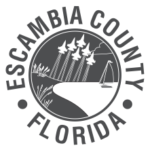
May 1 kicks off the official start of the Sea Turtle Nesting Season in Escambia County. Escambia County Sea Turtle Conservation Program volunteers will start their daily morning patrols, looking for signs of nesting activity on both Pensacola Beach and Perdido Key. The nesting season will run through September, although late season nests can hatch as late as October.
Four species of sea turtle nest in Escambia County. The loggerhead and green sea turtles are the most common nesters, followed by the less common Kemp’s ridley and leatherback. Female sea turtles will return to the beaches they hatched from and lay their eggs in the dry, sandy part of the beach. After 60 days, the eggs will hatch all at once under the cover of darkness. The small hatchling turtles will make their way into the Gulf of Mexico and swim for open water, where there are fewer predators. After a few years of growing and feeding, they’ll return to our area as juveniles and sub-adults where they’ll continue to grow and feed until they are mature enough to mate and lay nests of their own.
But sea turtles aren’t our only summertime visitors. Several species of shorebirds nest on local beaches in the summer months, including the least tern, snowy plover, and black skimmer. Shorebird nests are shallow scrapes in the sand, with extremely small, well-camouflaged eggs. Eggs will incubate for up to 30 days before the small, cotton ball-like chicks hatch. Parents will often sit on the eggs and with newly hatched chicks to protect them from predators and the hot Florida sun. Birds are easily disturbed by people and pets approaching too close.
Summer is also a busy tourist season and big crowds can have big impacts on sea turtles, shorebirds, and other coastal wildlife.
Help Protect Our Coastal Wildlife by Remembering:
Lights Out: Bright lights can disturb nesting sea turtles and disorient both adults and hatchlings on the beach. When visiting the beach after dark, keep cell phones and flashlights off. Use a red flashlight or no light at all! For beachfront homes, turn off exterior lights when not in use and keep blinds and curtains shut after sunset.
Leave No Trace: Help keep our beaches obstacle free for nesting and hatchling turtles. All personal items, including chairs, tents, umbrellas, toys, and water equipment, must be removed from the beach by sunset each day. Make sure to fill in holes and flatten any sandcastles.
Share the Beach: Stay out of posted nesting areas and avoid setting up belongings on the edges of marked areas. Avoid disturbing birds resting on the beach and if you see a nesting sea turtle; give it space! Do not handle sea turtle or shorebird eggs and hatchlings. Dogs are only allowed in designated beach dog parks and must be kept on a leash at all times.
For more information about sea turtles and other coastal wildlife in Escambia County, visit the link here, www.myescambia.com/seaturtles or follow the Escambia County Natural Resources Management Department on Facebook at @ECNaturalResourcesManagement when you click here.
Dead or injured sea turtles and marine life should be reported to Escambia County Marine Resources at (850) 426-1257 or the FWC Wildlife Alert line at 1-888-404-FWCC (3922). All sea turtle work is performed under Marine Turtle Permit #032.
